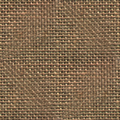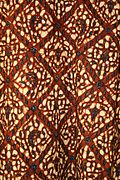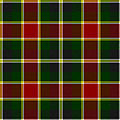- Conductive textile
-
A conductive textile is a fabric which can conduct electricity. Conductive textiles can be made with metal strands woven into the construction of the textile. There is also an interest in semiconducting textiles, made by impregnating normal textiles with carbon- or metal-based powders.[1]
Conductive fibers consist of a non-conductive or less conductive substrate, which is then either coated or embedded with electrically conductive elements, often carbon, nickel, copper, gold, silver, or titanium. Substrates typically include cotton, polyester, nylon, and stainless steel to high performance fibers such as aramids and PBO. Straddling the worlds of textiles and wires, conductive fibers are sold either by weight or length, and measured in denier or AWG.
Uses for conductive fibers and textiles may include static dissipation, EMI shielding, [2] signal and power transfer in low resistance versions, and as a heating element in higher resistance versions. Their benefits over solid or stranded metal wires come from conductive fibers' flexibility and ability to use them in existing textile and wire machinery (weaving, knitting, braiding, etc.)
Recent new entrants into the conductive fiber market now include highly conductive stainless steel fiber.
Because of the rapid growth in the kinds of conductive fibers and the uses of these fibers, a trade association has been formed to increase awareness, utilization, and possibly standarize terminology. The association is Conductive Fiber Manufacturers Council[3].
References
- ^ http://www.techexchange.com/thelibrary/smarttextiles.html
- ^ http://www.fibtex.lodz.pl/48_13_47.pdf
- ^ http://www.cfibermfg.com
See also
Categories:- Technical fabrics
- Electrostatics
Wikimedia Foundation. 2010.



